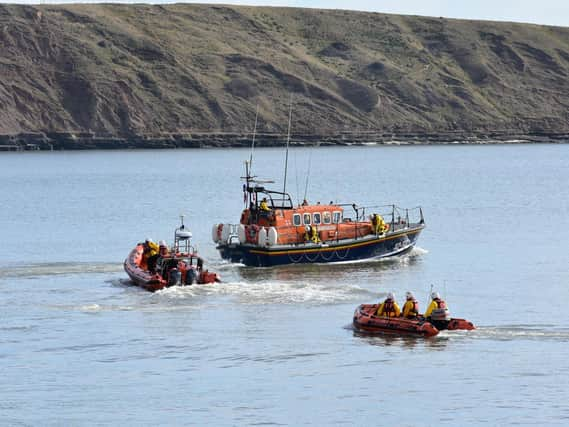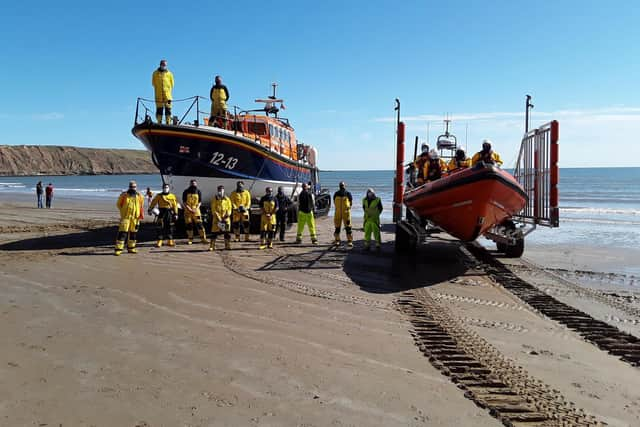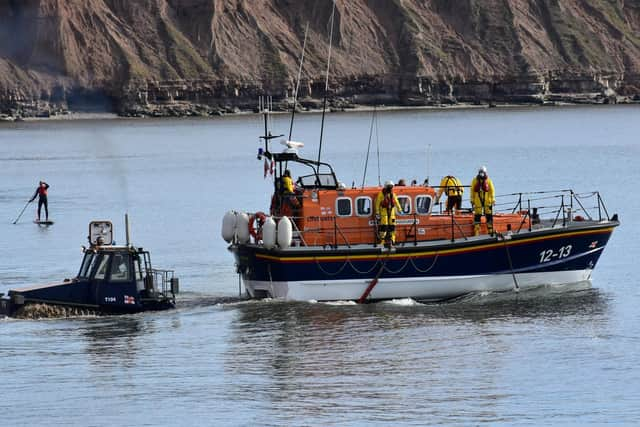Filey prepares to say farewell to all-weather lifeboat after 350 missions


Filey Lifeboat station has been a central part of the seaside town’s identity since being founded all the way back in 1804 and at one point in the 19th century, its boat saved more lives than any other crew in England.
The station has been run by the RNLI since 1852 and has been very much a family affair down the years, with generations of fathers, sons and more recently daughters serving in the volunteer crews down the decades.
Advertisement
Hide AdAdvertisement
Hide AdGiven the town’s close association to lifeboats, it was little surprise that a large but socially-distanced crowd of locals and passing holidaymakers gathered on Coble Landing on Sunday morning to witness a special but poignant moment in the station’s history unfold.


The final exercise of Filey’s Mersey class all-weather lifeboat (ALB) took place ahead of it being withdrawn from active service at the end of this month.
The ALB is due to launch for a final time on April 29, when it will be taken by sea manned by volunteers from Filey RNLI to Lowestoft in Suffolk where she will be lifted out. A decision is yet to be made on what will happen to the lifeboat in future.
As part of the weekend’s exercise, the ALB went out on the water with its temporary replacement – a relief Atlantic 85 lifeboat called Pride of Fred Olsen which will be stationed at Filey until a permanent new Atlantic 85 inshore lifeboat is built for the station in the next few months.
Advertisement
Hide AdAdvertisement
Hide AdAn RNLI coastal review decided to replace the ALB with the Atlantic 85 under changes that will see Filey operate two inshore lifeboats: an 8.5-metre Atlantic 85 and a four-metre D class boat.


On Sunday, the ALB launched under the command of Coxswain/Mechanic Neil Cammish and carried out a series of photoshoots before exercising with Pride of Fred Olsen.
One final trip to the north of Filey Brigg completed the nostalgic day before the boat was recovered and rehoused ready to be called out in the final 10 days that it is on station.
The Atlantic 85 inshore lifeboat is a rapid response vessel capable of speeds in excess of 35 knots (50mph) and it can be sent to incidents to assess the situation somewhat such as the paramedic cars. It will carry a crew of four.
Advertisement
Hide AdAdvertisement
Hide AdIf a larger lifeboat is needed then resources can be called from either Scarborough or Bridlington.
Given Filey has had an all-weather lifeboat on station since 1804, Sunday was an emotional day for many in attendance.
John Ward, Filey Lifeboat press officer, said: “I would like to thank all the people who turned up to watch our final exercise for keeping their social distance and also for sharing their memories with us.
“Times have moved on and this will be a new direction for the Filey volunteer crews and for life-saving on the Yorkshire Coast.”
Advertisement
Hide AdAdvertisement
Hide AdThe ALB has been based at the station since May 1991 and has been called out more than 350 times since then.
Its most famous rescues included the yacht Araxian, which encountered bad weather to the north of Filey Brigg in 2002.
Mr Ward said: “We took the yacht in tow to Scarborough but in the process one of our crew was washed overboard from the yacht. He had the presence of mind to grab hold of a rope and managed to haul himself back as we manoeuvred to retrieve him.”
It the same year it was involved in the rescue of the Kilpeacon yacht which ran aground on rocks near Flamborough Head in the middle of the night. The crew were rescued and the boat saved.
Advertisement
Hide AdAdvertisement
Hide AdIt was also involved with a rescue of a ferry which was on fire with 1,000 passengers on board in 2012 as well as the crew saving three fishermen following a fishing boar sinking at the end of Filey Brigg in September 2016.
The Atlantic 85 will be able to reach casualties more quickly than conventional lifeboats and the change reflects a shift from rescues increasingly involving leisure craft rather than larger fishing vessels.
A spokesperson for the RNLI said: “The RNLI’s aim is to reach at least 90 per cent of all casualties within 10 nautical miles of the coast within 30 minutes of launch, in all weathers. For that we need a network of 25-knot all-weather lifeboats and 35-knot inshore lifeboats at strategic points along the coast.
"The Atlantic 85 is quicker to launch than any all-weather lifeboat, has a maximum speed of 35 knots - much faster than even the Shannon at 25 knots – and is more manoeuvrable. It can also carry more than 20 casualties to shore at a time.”
Advertisement
Hide AdAdvertisement
Hide AdSupport The Yorkshire Post and become a subscriber today. Your subscription will help us to continue to bring quality news to the people of Yorkshire. In return, you'll see fewer ads on site, get free access to our app and receive exclusive members-only offers. Click here to subscribe.